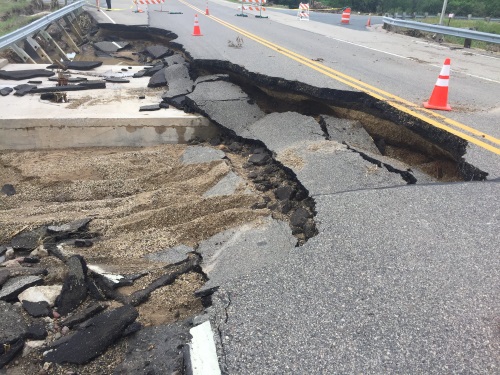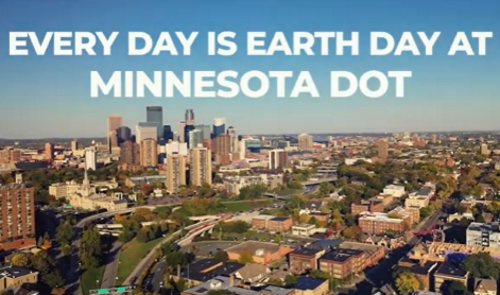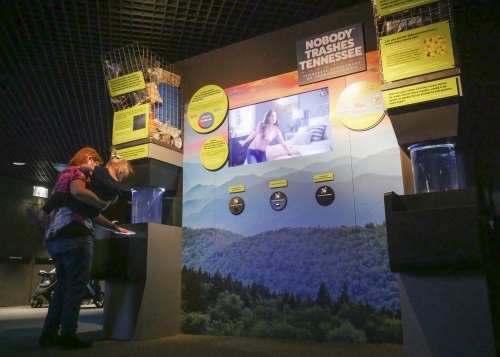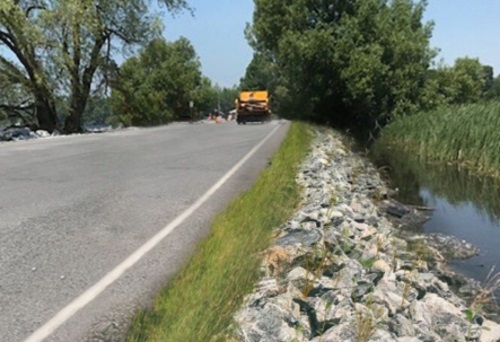Sen. Tammy Baldwin, D-Wisc., and Sen. Mike Braun, R-Ind., introduced the “Rebuilding Stronger Infrastructure Act” on April 20 to ensure that resilience improvements are eligible for federal funding, while requiring the Federal Highway Administration to provide states with the guidance and tools needed to rebuild infrastructure with more resiliency.
[Above photo by the Wisconsin DOT]
“Too often, highway infrastructure is rebuilt to pre-disaster specifications, leaving roads and bridges vulnerable to another disaster and costly damage repairs,” noted Sen. Baldwin in a statement.
“As extreme weather becomes more and more frequent, we need to empower states and local communities to build stronger and more resilient roads and bridges that can withstand the next storm or natural disaster,” she said. “This reform will not only ensure we are better protecting our infrastructure, but it will also save taxpayer dollars by making sure we are building it back better.”
“The Rebuilding Stronger Infrastructure Act ensures that we are investing in making our roads and bridges resilient to severe weather events and natural disasters while saving taxpayer dollars,” added Sen. Braun – covering the cost of damage from extreme weather and natural disasters such as severe storms, floods, or hurricanes.
The proposed legislation would:
- Require the FHWA to update its Emergency Relief Manual to include the definition of resilience and identify procedures state departments of transportation may use to incorporate resilience into emergency relief projects. The manual would also encourage the use of Complete Streets design principals and consideration of access for moderate and low income families impacted by a declared disaster;
- Require the FHWA to develop best practices for improving resilience of projects funded by the Emergency Relief program. Best practices will be shared with division offices of the Federal Highway Administration and state departments of transportation;
- Require the FHWA to develop and implement a process to track consideration of resilience projects as part of the Emergency Relief Program and the cost of Emergency Relief projects; and
- Clarifies that cost-justified resilience improvements are eligible for Emergency Relief funding.
Both the American Association of State Highway and Transportation Officials and Wisconsin Department of Transportation are supporting this bill.
“Sen. Baldwin’s Rebuilding Stronger Infrastructure Act is common-sense legislation that will save taxpayers’ dollars and prevent unnecessary disruptions to our transportation system,” noted Craig Thompson, secretary-designee for the Wisconsin DOT. “When we identify roads and bridges that are prone to be damaged by natural disasters like flooding, it just makes sense to improve them to avoid that damage, rather than risk the disruption and expense of repairing them after they’ve been washed out,” he explained. “Sen. Baldwin’s bill will help states like Wisconsin keep our roads and bridges in good condition.”







